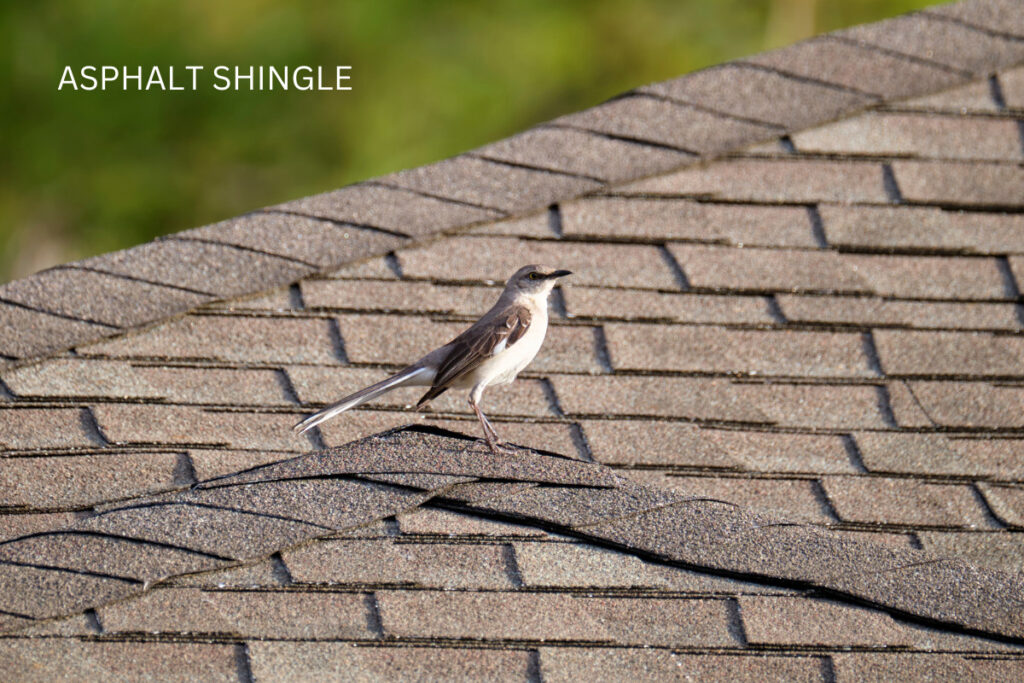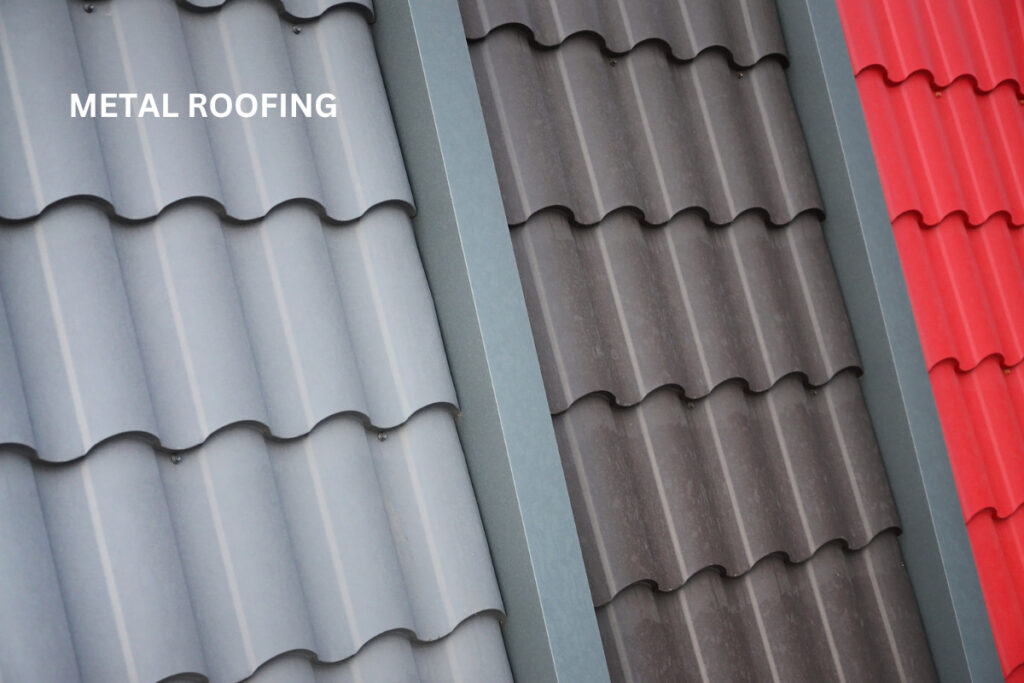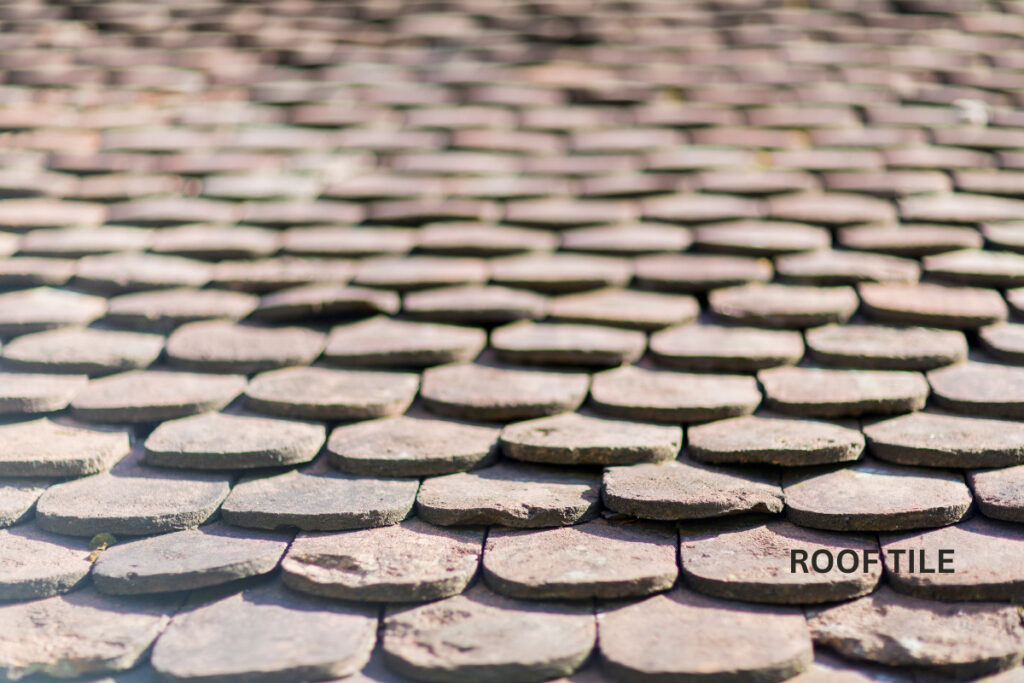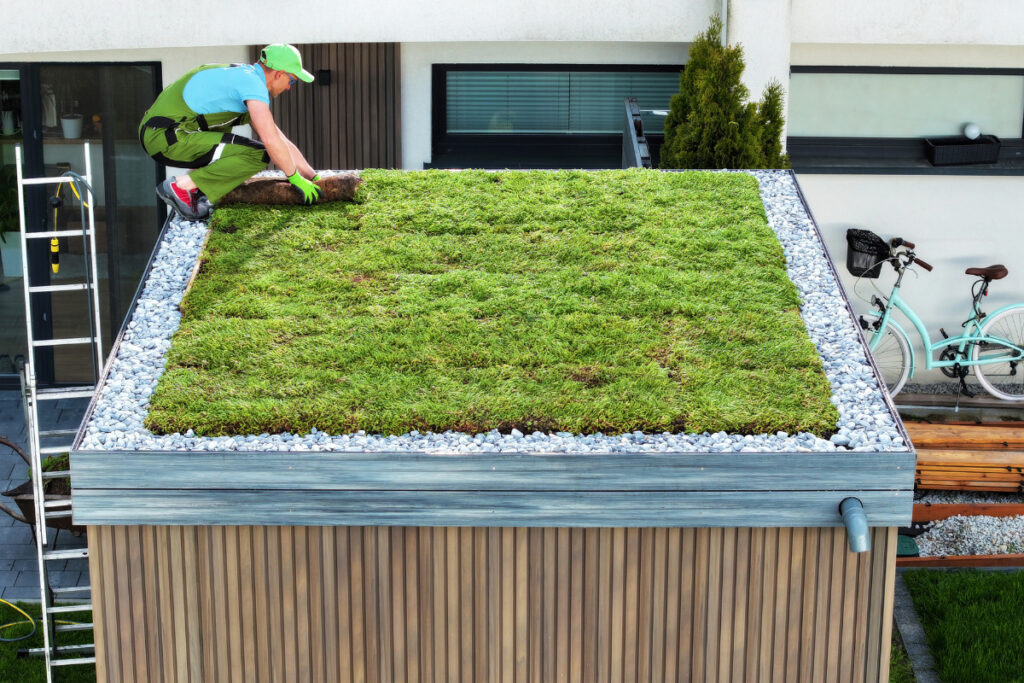Introduction
As the world continues to shift towards renewable energy, homeowners are increasingly looking for ways to optimize their solar power investment. One crucial aspect is selecting the right roofing material to maximize your solar panel’s efficiency and longevity.
With various options such as asphalt shingles, composite shingles, metal roofing, tile roofing, and green roofs available today, making an informed decision can be overwhelming.
In this blog post, we will guide you through the different roof materials best suited for solar panels, along with essential factors to consider when choosing one tailored to your needs.
| Key Takeaways |
|---|
| The choice of roof material is important to maximize solar energy efficiency and longevity of your solar panels. |
| Asphalt shingles are an affordable option but have a shorter lifespan and lower energy efficiency than other alternatives like metal or composite roofing. |
| Metal roofing is highly reflective, durable, and long - lasting; however, it tends to be more expensive than other options like asphalt or composite shingles. |
| Green roofs are an innovative option that offers environmental benefits but can be heavy and require more maintenance. |
Roof Materials For Solar Panel Installation
Several roof materials work well for solar panel installation, including asphalt shingles, composite shingles, metal roofing, tile roofing, and green roofs.

Asphalt Shingles
Asphalt shingles are among the most popular roofing materials for homeowners looking to optimize solar energy efficiency. Their widespread use can be attributed to their affordability and ease of installation, making them an appealing option for those on a budget.
However, it is crucial to consider the lifespan and energy efficiency of asphalt shingles when weighing your options. Compared to metal or composite roofing alternatives, asphalt shingle roofs have shorter lifespans and lower energy efficiency due to their limited reflectivity.
This may lead to increased heat absorption by the roof during warmer seasons, negatively impacting household energy savings from solar panels.

Composite Shingles
Composite shingles are a popular roofing material for those considering adding solar panels to their roof. These shingles, made from a mixture of materials such as asphalt and fiberglass, have several advantages regarding energy efficiency and cost-effectiveness.
They come in different colors and styles, making them an easy choice for homeowners who want to improve their home’s aesthetic appeal while reaping the benefits of solar panel installation.
Composite shingles are relatively durable and long lasting, making them a reliable option for protecting homes against harsh weather conditions while maintaining high levels of energy efficiency.

Metal Roofing
Metal roofing is an excellent option for homeowners looking to optimize solar energy efficiency. This roofing material is highly durable and reflective, making it a sustainable choice for solar panel installation.
Metal roofs are also lightweight and come in various colors, allowing homeowners to choose the best option that suits their style preferences.
When considering metal roofing as a potential material for solar panels, homeowners should note that it tends to be more expensive than other options like asphalt or composite shingles.
However, its longevity often makes up for the initial cost since metal roofs can last up to 50 years with minimal maintenance. The direction and slope of the roof are also important factors to consider when installing solar panels on a metal roof – south-facing roofs with a slope of 30-45 degrees typically yield the best results.

Tile Roofing
Tile roofing is a popular choice for homeowners looking to install solar panels. These roofs are durable, long-lasting, and offer excellent energy efficiency.
However, their high cost and heavy weight can be drawbacks for some homeowners.
When choosing tile as your roof material for solar panels, it’s important to consider whether your roof can support the tiles’ weight and the solar panels’ additional weight.
Additionally, you should evaluate the angle and orientation of your roof to ensure maximum sun exposure for optimal solar panel performance. While tile roofing may have a higher upfront cost than other materials like asphalt or composite shingles, they offer long-term savings on energy bills thanks to their energy efficiency.

Green Roofs
Green roofs are an innovative roofing option that offers energy efficiency and environmental benefits. They are living roofs covered in vegetation and soil over a waterproof membrane.
The roof plants help reduce heat absorption, filter pollutants from the air, and provide insulation for both cooling and heating purposes. However, there are some downsides to green roofs as well – they can be quite heavy due to the added soil needed for planting, which creates additional stress on the building’s structure; they also require more maintenance than other roofing materials.
Factors To Consider When Choosing The Best Roof Material For Solar Energy Efficiency
Consider solar panel compatibility, durability against weather conditions, energy efficiency, aesthetic appeal, roof angle and orientation, and reflectivity when choosing the best roof material for optimizing solar energy efficiency.
Solar Panel Compatibility
Choosing a roofing material compatible with solar panels is essential to ensure optimal solar energy efficiency. Not all roofing materials are suitable for supporting the weight of solar panels, and some may not have the necessary durability to withstand weather conditions.
For example, asphalt shingles are a popular roofing material but may not be strong enough to support the weight of solar panel installations without additional reinforcement.
Conversely, metal roofs are typically more durable and can easily support solar panels, providing reflective properties that increase energy efficiency.
Durability Against Weather Conditions
Choosing a durable roofing material is crucial for solar energy efficiency. The roof must withstand the harsh weather conditions in your area, such as extreme heat, wind, rain, and even snow.
Materials like metal roofing and composite shingles are known for their durability against harsh weather conditions. Metal roofs can withstand high winds and heavy rainfall due to their interlocking panels and corrosion resistance.
On the other hand, asphalt shingles have a shorter lifespan of 20-25 years and may not hold up well against severe weather conditions over time.
Energy Efficiency
When choosing the best roof material for optimizing solar energy efficiency, energy efficiency is crucial. The right roofing material can help reduce your energy bills by capturing and converting more sunlight into electricity through solar panels.
Metal roofing, for example, is a highly reflective material that bounces off sunlight instead of absorbing it, making it an ideal choice for solar panel installation. Additionally, unpainted metal roofs have high-emittance properties that increase thermal radiation and lower roof temperatures, further improving your home’s energy efficiency.
Aesthetic Appeal
The aesthetic appeal of roofing material is important when choosing the best option for solar energy efficiency. Homeowners want their homes to look good and be energy-efficient, and fortunately, many roofing materials offer both.
For example, metal roofs come in various colors and finishes, while tile roofs have a unique look that can give a home a Mediterranean or Spanish-style appearance.
In addition to aesthetics, roofing materials can impact the visual integration of solar panels. A sleek metal roof paired with black solar panels creates a modern, seamless look for your home.
On the other hand, green roofs can make solar panels less visible from street view by covering them with vegetation that complements natural surroundings.
Roof Angle And Orientation
The roof angle and orientation are crucial factors when determining the best roof material for solar energy efficiency. A south-facing roof with a slope between 30-45 degrees tends to be ideal because it receives the most sunlight throughout the day, optimizing solar panel performance.
However, this may vary depending on your location and climate conditions. For instance, if you live in a region with more cloud cover or shorter daylight hours during certain times of the year, an east or west-facing roof might be a better option to ensure maximum exposure to direct sunlight.
Reflectivity
Reflectivity is an important factor to consider when choosing the best roof material for solar energy efficiency. The reflectivity of a roofing material refers to its ability to reflect sunlight and reduce absorption into the building below.
Materials with high reflectivity help keep the roof cool, reducing heat transfer to your home and lowering your energy bills.
Additionally, reflective roofing materials can extend your roof’s lifespan by reducing damage from UV radiation and weathering. Metal roofing has high reflectivity and durability, making it a popular choice for those who want both longevity and energy efficiency in their roofs.
Pros And Cons Of Each Roof Material
Learn about the advantages and drawbacks of popular roofing materials for solar panel installation, from low-cost asphalt shingles to durable metal roofing with high energy efficiency.
Asphalt Shingles: Low Cost, But Shorter Lifespan And Lower Energy Efficiency
Asphalt shingles are the most popular and affordable roofing material in the US, but they are not always the best option for solar panel installation. While asphalt shingles may save you money upfront, they have a shorter lifespan and lower energy efficiency than roofing materials.
In fact, asphalt shingles typically last between 20-25 years, while metal roofs can last up to 50 years or more. Additionally, asphalt shingle roofs absorb heat rather than reflect it like metal or composite roofing materials.
This means they can trap hot air inside your home during summer, leading to higher cooling costs.
Composite Shingles: Moderate Cost, Moderate Lifespan, And Moderate Energy Efficiency
Composite shingles are a popular roofing material for solar panels due to their moderate cost, lifespan, and energy efficiency. They are made from a mixture of asphalt, fiberglass, and recycled plastics, making them durable yet flexible.
Compared to asphalt shingles, composite shingles have a longer lifespan of around 25-30 years and offer better energy efficiency by reflecting more sunlight away from the roof surface.
Composite shingles come in various colors and styles to match different aesthetic preferences while being affordable for most homeowners.
However, they may not be as long-lasting or efficient as metal or tile roofing options.
Metal Roofing: High Durability And Energy Efficiency, But High Cost
Metal roofing is a popular choice for homeowners installing solar panels because of its durability and energy efficiency. They are lightweight, reflective, and long-lasting, making them an attractive option for those seeking to lower their carbon footprint.
However, the cost of metal roofing can be higher than other materials like asphalt shingles or composite roofing. Despite this, the potential long-term savings on electricity bills make it a worthwhile investment for many homeowners who prioritize sustainability and energy efficiency.
Tile Roofing: High Durability And Energy Efficiency, But Heavy Weight And High Cost
Tile roofing is popular for homeowners looking to optimize solar energy efficiency. It’s high durability and energy efficiency make it an excellent investment in the long run.
However, there are some downsides to consider. Tile roofs are heavy, meaning they may require additional support if your home wasn’t built with them in mind. Additionally, tile roofs are often more costly than other materials and may not fit everyone’s budget.
Metal roofing is another option that offers high durability and energy efficiency without the weight of tile roofing. Its reflective properties make it a convenient choice for optimizing solar panel performance.
Green Roofs: High Energy Efficiency And Environmental Benefits, But High Cost And Maintenance
Green roofs are becoming popular for energy-efficient and environmentally-friendly roofing materials. These roofs consist of layers of vegetation, soil, and drainage systems on top of a waterproof membrane.
They offer excellent insulation properties that reduce heating and cooling costs while absorbing carbon dioxide from the air. However, they come at a high cost due to the complex installation process and ongoing maintenance requirements such as watering, pruning, and fertilizing.
In addition to energy efficiency benefits, green roofs have environmental benefits, such as reducing the urban heat island effect by providing shade and evaporative cooling products.
Green roofs can also improve biodiversity in urban environments by providing habitats for birds and insects in areas with limited green space availability.
Choosing The Best Roof Material For Your Solar Energy Needs
To ensure the best results for your solar energy needs, it’s important to consult with a professional installer and consider factors such as long-term cost savings, compatibility with solar panels, and aesthetic appeal when selecting the suitable roofing material – keep reading to make an informed decision!
Consult With A Professional Solar Installer
It’s always a good idea to consult a professional solar installer before deciding on the best roof material for your solar energy needs. These experts can evaluate your roofing type and condition, assess your energy usage, and recommend the most efficient and cost-effective solutions.
In addition to technical expertise, solar installers often have experience working with various roofing materials and can provide insights into which options are compatible with your specific system requirements.
Evaluate The Long-term Benefits And Cost Savings
Considering the long-term benefits and cost savings when choosing the best roof material for your solar energy needs is important. While some materials may be cheaper upfront, they may not necessarily provide the best return on investment regarding energy efficiency and durability.
Metal roofing, for example, is a bit pricier than other options but can last up to 50 years while providing excellent insulation and reflecting sunlight to keep your home cool.
Composite shingles are also known for their durability and come in various styles that can complement any home’s aesthetic.
Consider Your Budget And Priorities
When choosing the best roof material for solar energy efficiency, it’s important to consider your budget and priorities. Investing in a high-quality roofing material may initially seem expensive, but it can provide significant cost savings in the long run by maximizing energy efficiency and reducing electricity bills.
However, if you have other financial priorities or limitations, there are still options available such as composite shingles, which offer a moderate cost while still providing reasonable durability and energy efficiency.
Assess The Compatibility Of Your Roofing Material With Solar Panels
It’s important to ensure that your chosen roofing material is compatible with solar panels to optimize energy efficiency and avoid potential damage. Some roofing materials, such as asphalt shingles, may not be strong enough to support the weight of solar panels or may require additional reinforcement.
On the other hand, metal roofs are often a good choice for solar panel installation due to their durability and ability to reflect sunlight. It’s crucial to consider the age and condition of your roof before installing solar panels. An older roof may require repairs or replacement to adequately support a solar system.
Consulting a professional installer can assess your existing roof’s compatibility and identify necessary modifications for optimal performance.
Composite shingles are a popular option due to their widespread use. At the same time, metal roofs are lightweight, durable, and reflective, making them an energy-efficient choice for solar panels.
Choose A Material That Fits Your Specific Needs And Preferences
It’s important to consider your needs and preferences when choosing a roofing material for solar panel installation. Whatever your priorities may be, there is a roofing material to meet your specific requirements.
Composite shingles offer affordability, moderate durability, and energy efficiency, making them a suitable choice. Alternatively, for those willing to invest in high-cost but highly efficient options, metal roofing is a perfect fit.
It’s also worth considering how the color and reflectivity of your chosen roof material can affect solar energy absorption.
Conclusion
Choosing the best roof material for solar panel installation can significantly impact energy efficiency and cost savings. When making a decision, it is crucial to consult with a professional installer and evaluate the long-term benefits. Factors such as compatibility, durability, and aesthetic appeal should be carefully considered.
While asphalt shingles may be low-cost, metal roofing and tile roofing offer high durability and energy efficiency. Flat roofs and shading obstacles may not be ideal for solar panels.
![]()
Contact DroneQuote for your roofing and solar needs
If you have questions on anything about solar or roofing, contact DroneQuote. We offer comprehensive roofing services, including which roof suits your solar needs. Our services include new installations, repairs, and solar panel integration.
Moreover, our expert drone technicians can perform site analysis, providing before and after comparisons to ensure high-quality workmanship. Therefore, you can rely on us for all your roofing needs. Don’t hesitate to reach out to us. Let’s work together towards creating a safer and more beautiful home!
FAQs
- What are the benefits of choosing a solar energy-optimizing roof material?
Choosing a roofing material that maximizes solar energy efficiency can significantly reduce reliance on traditional power sources. This leads to lower utility bills, increased savings over time, and reduces your carbon footprint on the environment.
- What factors should I consider when selecting the best roof material for solar energy optimization?
The ideal roofing materials will possess several key qualities. These include heat-absorption capability, durability, long-lasting performance, high reflectivity, good conductivity, resistance to weather damage, and effective waterproofing. The slope of your roof is also important in determining which roofing materials work best for you.
- Which types of roofs are most efficient at capturing solar energy?
Metal roofs are highly efficient, absorbing sunlight during the day and dissipating heat overnight through natural cooling processes. This not only improves home insulation but also reduces HVAC costs. Similarly, modified Bitumen/TPO or EPDM membranes are excellent options. These flexible materials have high UV resistance, making them ideal for sunny and dry climates.
- Can any type of roof support a solar panel system?
Ideally, for maximum load-bearing capability, metal roofs designed with standing seams/corrugations provide rigid anchoring points throughout their length (metal panels). In contrast, flat built-up/tar-and-gravel style bitumen-roofed substrates would need strengthening due its weight considerations before installation. Still, it may require additional reinforcement depending upon climate/weight-load requirements post-installation if hosting heavy infrastructure such as wind turbines, etc…
General Facts
- Various types of roofs work well for solar panels, including composite roofing, metal roofing, and asphalt shingle roofing.
- The best roofing material for solar panels depends on budget, location, and personal preferences.
- Composite roofing is a cost-effective, versatile, and durable option for solar panels.
- Metal roofs are lightweight, durable, and reflective, making them an energy-efficient choice for solar panels.
- High-emittance roofs, like unpainted metal, release heat efficiently, lowering roof temperatures.
- Composite shingles are the most common roofing material for solar panels due to their widespread use.
- South-facing roofs with a slope of 30-45 degrees maximize solar panel performance.
- Not all roofs are suitable for solar panels, with flat roofs and those with shading obstacles being less ideal.
- Solar shingles are a newer option for a roofing material that can double as solar panels.
- Choosing the right roof material for solar panels can optimize energy efficiency and save money on electricity bills.

